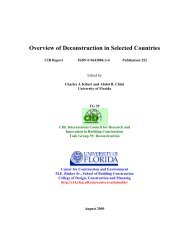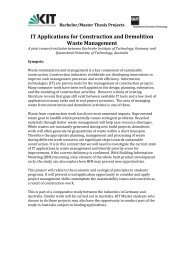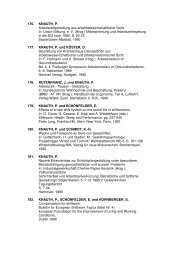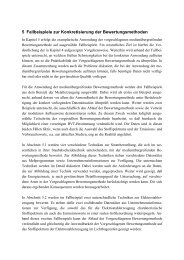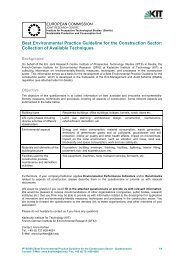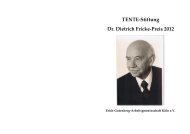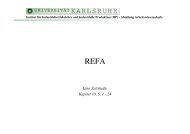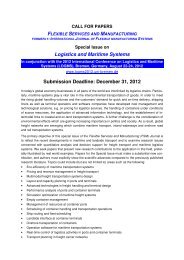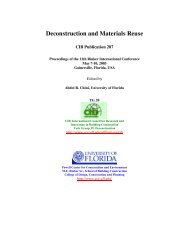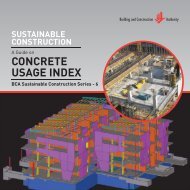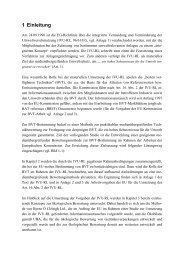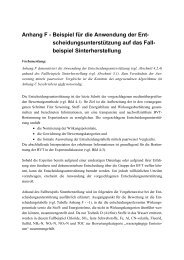Waste reduction final report -4 - Test Input
Waste reduction final report -4 - Test Input
Waste reduction final report -4 - Test Input
You also want an ePaper? Increase the reach of your titles
YUMPU automatically turns print PDFs into web optimized ePapers that Google loves.
Standard<br />
(Year)<br />
Building<br />
standards<br />
SIA 112/1<br />
(2005)<br />
SIA D 0200<br />
(2004)<br />
SIA D 0152<br />
(1998)<br />
SIA D 0164<br />
(2000)<br />
Title<br />
Sustainable<br />
construction –<br />
house building<br />
SNARC, System<br />
for an<br />
environmental<br />
sustainability<br />
assessment of<br />
architecture<br />
projects<br />
Comparison of<br />
instruments for<br />
ecological<br />
construction –<br />
guidance for<br />
planners<br />
Criteria for<br />
sustainable<br />
constructions<br />
SIA D 0137 Check lists for<br />
ecological<br />
planning and<br />
construction with<br />
suitable energy<br />
considerations<br />
SIA 2032<br />
Grey energy of<br />
buildings<br />
SIA D 0167 Planning and<br />
Short description<br />
The SIA 112/1 provides guidance that enables principal and<br />
planner to communicate possible tasks and objectives in<br />
sustainable building. It covers social, economic and ecological<br />
aspects of sustainability in building through defined criteria and<br />
objectives. Propositions and recommendations for the choice of<br />
appropriate construction materials are made:<br />
- Use of available primary resources and a maximum use of<br />
secondary (reused or recycled) resources<br />
- Use of materials with low embodied energy and low<br />
environmental impacts<br />
- Avoiding materials which emit harmful substances<br />
- Use of assemblies, techniques and devices that facilitate<br />
easy separation for reuse or recycling<br />
(Translation taken out of [CIB 2008])<br />
This is a tool for assessing a project during an architecture<br />
competition. It is a systematic approach aimed at facilitating an<br />
impartial assessment of a project’s fulfilment of environmental<br />
objectives. The evaluation criteria cover important aspects like<br />
resource demand and embodied energy in construction and<br />
flexibility for later refurbishment. (Translation taken out of<br />
[CIB 2008])<br />
This is a compilation of Swiss and other instruments concerning<br />
ecological construction engineering. A big part of the standard<br />
consists out of case studies. The planner shall be supported in<br />
the choice of appropriate instruments. The disadvantage of this<br />
documentation is its age.<br />
This is a clear guide for basics, decisions and education for<br />
sustainable house building. With the help of a criteria catalogue,<br />
buildings can be checked on their sustainability by principals<br />
and planners. Equal strengths are put on the three pillars<br />
economy, ecology and society.<br />
This standard covers important aspects on the following points:<br />
- Residential estate, surrounding, traffic<br />
- Energy, water, air<br />
- Construction materials<br />
- Domestic engineering<br />
- Economy<br />
This documentation shall contribute to an integral view on a<br />
buildings energy use. The calculation method is standardised so<br />
that everybody will use the same data basis in order to ensure<br />
comparability. As second point, the documentation wants to<br />
make planners aware of the issue of grey energy.<br />
This documentation shows in which phase of construction<br />
158



